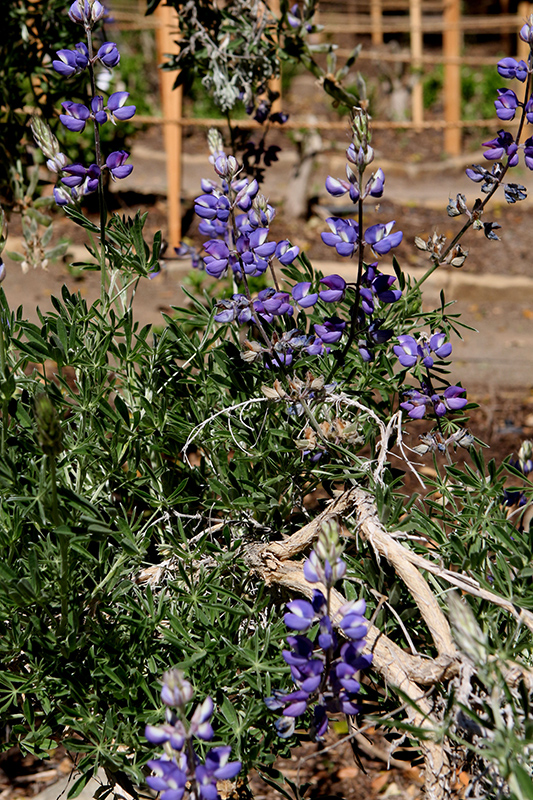Shonnard’s Nursery
Plant Finder Tool
Height: 4 feet
Spread: 3 feet
Sunlight:
![]()
![]()
Hardiness Zone: 7b
Description:
A pretty dryland and coastal shrub from western North America with ferny silver leaves topped by spikes of violet to purple flowers in spring; well behaved, ideal for adding color to tough dry locations and for covering a large area
Ornamental Features
Silver Bush Lupine is smothered in stunning spikes of violet pea-like flowers rising above the foliage from mid to late spring, which emerge from distinctive purple flower buds. The flowers are excellent for cutting. It has attractive silver deciduous foliage. The narrow palmate leaves are highly ornamental but do not develop any appreciable fall color.
Landscape Attributes
Silver Bush Lupine is a multi-stemmed deciduous shrub with an upright spreading habit of growth. It lends an extremely fine and delicate texture to the landscape composition which should be used to full effect.
This shrub will require occasional maintenance and upkeep, and should only be pruned after flowering to avoid removing any of the current season's flowers. It is a good choice for attracting butterflies and hummingbirds to your yard, but is not particularly attractive to deer who tend to leave it alone in favor of tastier treats. It has no significant negative characteristics.
Silver Bush Lupine is recommended for the following landscape applications;
- Mass Planting
- Hedges/Screening
- General Garden Use
- Naturalizing And Woodland Gardens
Planting & Growing
Silver Bush Lupine will grow to be about 3 feet tall at maturity, with a spread of 3 feet. It has a low canopy. It grows at a medium rate, and under ideal conditions can be expected to live for approximately 5 years.
This shrub does best in full sun to partial shade. It prefers dry to average moisture levels with very well-drained soil, and will often die in standing water. It is not particular as to soil pH, but grows best in clay soils. It is highly tolerant of urban pollution and will even thrive in inner city environments. This species is native to parts of North America, and parts of it are known to be toxic to humans and animals, so care should be exercised in planting it around children and pets.

